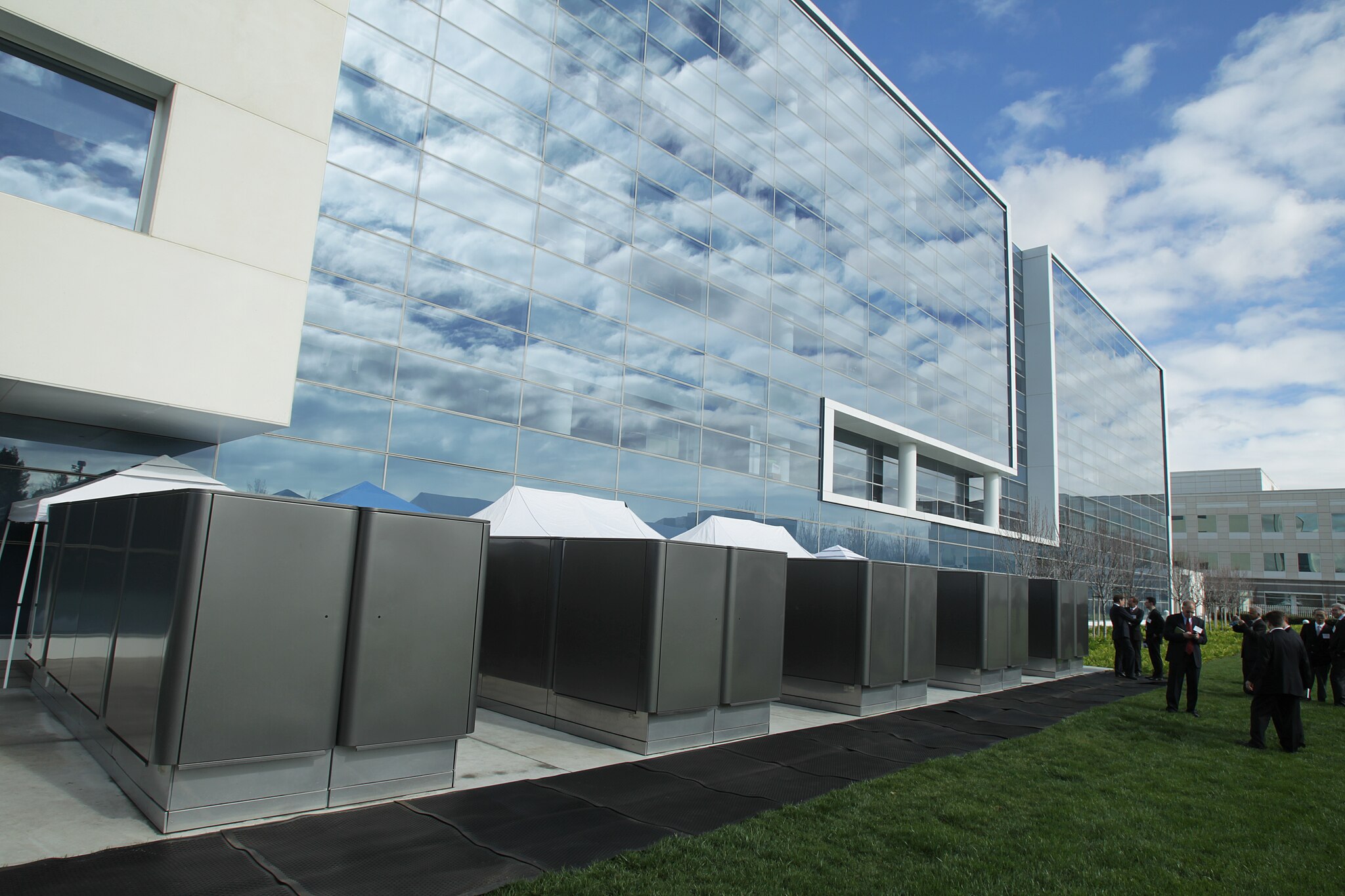Report on Data Center Power Strategies and Alignment with Sustainable Development Goals
Executive Summary
Evolving grid reliability standards and regulatory measures are compelling the data center industry to adopt new power strategies, shifting focus towards onsite generation and energy storage. This transition presents a significant opportunity to advance several United Nations Sustainable Development Goals (SDGs), particularly in the areas of energy, infrastructure, and climate action. This report analyzes the impact of new regulations in jurisdictions like Texas and California, highlighting the industry’s pivot to resilient power solutions and the policy reforms required to support this sustainable transformation.
Regulatory Drivers and the Imperative for Resilient Infrastructure (SDG 9)
Recent legislative actions are fundamentally altering the risk landscape for data center operations, necessitating a move towards more resilient and independent infrastructure, a core tenet of SDG 9 (Industry, Innovation, and Infrastructure).
- Texas Legislation: A new “kill switch” law permits utilities to disconnect large industrial consumers, including data centers, during grid emergencies to ensure power continuity for residential users. This prioritizes SDG 11 (Sustainable Cities and Communities) but creates untenable operational risks for data centers with contractual uptime guarantees.
- Operational Unsustainability: As noted by James Roth of Bloom Energy, the risk of sudden, forced shutdowns is unsustainable for critical digital infrastructure, particularly for AI workloads that require uninterrupted power.
- Industry Response: In response, operators are increasingly recognizing the value of onsite power systems to mitigate exposure to regulatory interventions and grid instability, thereby building the resilient infrastructure called for in SDG 9.
Onsite Energy Solutions: Advancing SDG 7 and SDG 13
The industry’s strategic shift towards onsite power generation and storage directly supports SDG 7 (Affordable and Clean Energy) and SDG 13 (Climate Action) by promoting decentralized, reliable, and potentially cleaner energy systems.
Key Developments:
- Energy Independence: Data centers are installing systems like batteries and microgrids to maintain operations independently of the public grid. This enhances control over power supply and reduces vulnerability to external disruptions.
- New Siting Paradigm: A new model for data center siting is emerging. Location decisions are now being mapped around the potential for onsite energy storage and generation rather than solely on proximity to traditional transmission lines. This facilitates the integration of modern energy solutions consistent with SDG 7.
- Bypassing Grid Congestion: In regions like California, storage-backed microgrids enable data centers to bypass long interconnection queues, accelerating the deployment of critical infrastructure. When these microgrids utilize clean energy sources, they contribute to climate action goals (SDG 13) by reducing reliance on a potentially fossil-fuel-heavy grid.
Policy Barriers and Recommendations for Sustainable Growth
Despite the potential for alignment with SDGs, outdated policy frameworks hinder the rapid deployment of innovative and sustainable energy solutions for the data center industry.
Identified Challenges:
- Archaic Permitting: In California, the Application for Certification (AFC) process treats modern onsite energy systems as traditional “thermal” power plants, subjecting them to slow-moving environmental reviews designed for gas infrastructure.
- Impeding Clean Energy Deployment: This regulatory misclassification creates significant delays and disincentivizes the adoption of new, cleaner technologies that could be deployed quickly to support the AI-driven economy, undermining progress on SDG 7 and SDG 13.
Policy Recommendations:
To ensure the United States can sustainably capture the economic benefits of the AI boom, policy frameworks must be modernized.
- Reinterpret Permitting Processes: Regulatory bodies must reinterpret or reform lengthy permitting constructs like the AFC process to create expedited pathways for new, reliable, and clean energy solutions.
- Incentivize Resilient Infrastructure: Policies should encourage the development of onsite power and microgrids that enhance both industrial competitiveness and overall grid stability, supporting the objectives of SDG 9.
- Promote Clean Technology: Frameworks must differentiate between fossil-fuel-based generation and clean energy technologies to accelerate the transition envisioned in SDG 7 and SDG 13.
Analysis of Sustainable Development Goals (SDGs) in the Article
SDGs Addressed in the Article
-
SDG 7: Affordable and Clean Energy
The article’s core focus is on ensuring a reliable and uninterrupted power supply for data centers. It discusses the challenges of grid instability (“grid emergencies,” “sudden power shutoffs”) and the shift towards innovative energy solutions like “onsite systems,” “batteries,” and “storage-backed microgrids.” This directly relates to the goal of ensuring access to affordable, reliable, sustainable, and modern energy for all, particularly for critical industrial infrastructure.
-
SDG 9: Industry, Innovation, and Infrastructure
The text heavily emphasizes the need for resilient and reliable infrastructure to support the growing data center and AI industries. It highlights how current grid infrastructure is failing to meet demand (“traditional grid expansion nearly impossible at the pace AI-driven workloads demand”) and how regulations (“kill switch’ law”) are forcing industries to innovate. The development of “islanded microgrids” and new methods of “data center siting” are prime examples of building resilient infrastructure to support industrial growth and technological innovation.
-
SDG 8: Decent Work and Economic Growth
The article explicitly connects energy policy and infrastructure to economic outcomes. The concluding statement, “Getting the policy framework right will determine whether the US effectively captures the economic benefits of the AI boom,” directly links the reliability of the energy infrastructure to sustained economic growth driven by the technology sector. The ability to power AI workloads without downtime is presented as a prerequisite for economic productivity and competitiveness.
-
SDG 11: Sustainable Cities and Communities
The Texas “kill switch” law is a policy designed to manage grid emergencies by disconnecting large industrial users to “keep electricity flowing to the largest number of people.” This is a direct example of a policy aimed at making energy infrastructure more resilient for communities, even if it creates challenges for industry. It addresses the need for integrated policies and plans to manage resources and ensure community resilience during crises.
Specific SDG Targets Identified
-
Target 9.1: Develop quality, reliable, sustainable and resilient infrastructure
The entire article is a case study on this target. The risk of “sudden shutoffs” and the inability of the grid to keep pace with demand demonstrate a lack of reliable and resilient infrastructure. The industry’s response—installing “batteries capable of supporting independent operations” and adopting “islanded microgrids”—is a direct effort to develop this type of infrastructure at the facility level to support economic development in the AI sector.
-
Target 7.2: Increase substantially the share of renewable energy in the global energy mix
While not the main focus, this target is implied. The push for onsite generation and storage systems like batteries and microgrids are key enablers for integrating renewable energy sources, which are often variable. The regulatory hurdle in California, where new onsite systems are treated as “thermal” plants, highlights a barrier to deploying modern, and potentially cleaner, energy solutions that could increase the share of sustainable energy powering the tech industry.
-
Target 9.4: Upgrade infrastructure and retrofit industries to make them sustainable
The article calls for policy upgrades to support technological ones. The statement that “Lengthy permitting constructs like California’s AFC process…must be reinterpreted” is a direct call to upgrade regulatory infrastructure. This is necessary to accommodate “new solutions that can be deployed quickly and reliably,” facilitating the retrofitting of the data center industry with more modern and resilient power systems.
-
Target 8.2: Achieve higher levels of economic productivity through technological upgrading and innovation
The article links the successful deployment of AI—a major driver of technological upgrading and productivity—to the energy framework. The risk of downtime for “AI workloads that can’t afford a second of downtime” shows that without innovation in energy infrastructure (e.g., microgrids), the economic productivity gains from AI could be jeopardized. The article argues that policy must support this technological upgrading to realize economic benefits.
Indicators for Measuring Progress
-
Reliability of Power Supply for Industrial Users
The article implies this indicator through its repeated references to “sudden power shutoffs,” “24/7 uptime guarantees,” and the risk of being “forcibly disconnect[ed].” Progress could be measured by tracking the frequency and duration of power disruptions for large industrial users like data centers.
-
Adoption of Onsite Power Generation and Storage
The text points to a trend of data centers installing “onsite systems,” “batteries,” and “microgrids.” An indicator of progress towards resilient infrastructure (Target 9.1) would be the installed capacity of such systems at industrial facilities, showing a shift away from sole reliance on the traditional grid.
-
Regulatory and Permitting Timelines for New Energy Infrastructure
The article explicitly mentions “long interconnection wait times” and “slow-moving environmental reviews” as major problems. A key indicator for measuring progress on upgrading regulatory infrastructure (Target 9.4) would be the average time required to approve and connect new onsite energy systems, with a reduction in time signifying improvement.
-
Investment in AI-related Infrastructure
The article suggests that a favorable policy framework for energy will lead to capturing the “economic benefits of the AI boom.” An indicator for this (related to Target 8.2) would be the level of investment in new data centers and AI computing infrastructure within a given region, which is contingent on the availability of reliable power.
Summary Table of SDGs, Targets, and Indicators
| SDGs | Targets | Indicators (Implied from Article) |
|---|---|---|
| SDG 9: Industry, Innovation and Infrastructure | 9.1: Develop quality, reliable, sustainable and resilient infrastructure. | Frequency and duration of power shutoffs for industrial users; Installed capacity of onsite microgrids and battery storage at data centers. |
| SDG 7: Affordable and Clean Energy | 7.2: Increase substantially the share of renewable energy in the global energy mix. | Deployment rate of modern onsite energy systems (as opposed to traditional “thermal” plants). |
| SDG 9: Industry, Innovation and Infrastructure | 9.4: Upgrade infrastructure and retrofit industries to make them sustainable. | Average permitting and interconnection time for new onsite energy projects. |
| SDG 8: Decent Work and Economic Growth | 8.2: Achieve higher levels of economic productivity through technological upgrading and innovation. | Level of investment in new data center construction and AI infrastructure. |
| SDG 11: Sustainable Cities and Communities | 11.b: Implement integrated policies and plans towards… resilience to disasters. | Existence and application of grid management policies (like demand response or curtailment programs) during energy emergencies. |
Source: ess-news.com







